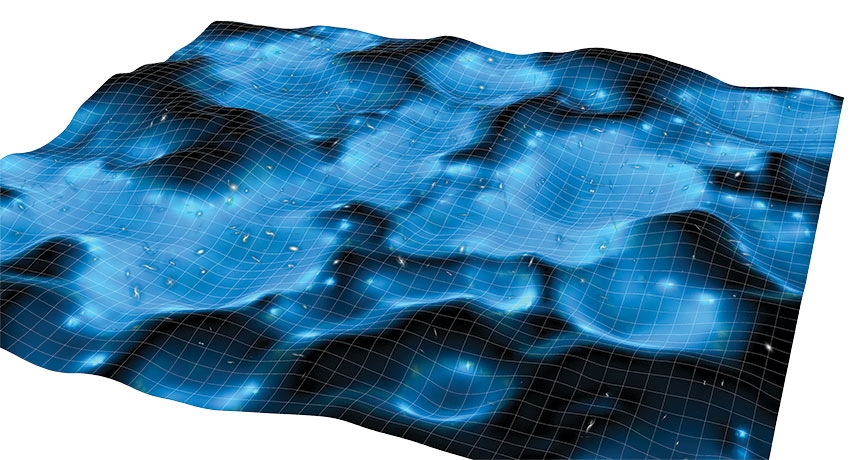Simulating the universe using Einstein’s theory of gravity may solve cosmic puzzles

Until recently, simulations of the universe haven’t given its lumps their due
BY EMILY CONOVER 3:30PM, NOVEMBER 14, 2017
Magazine issue: Vol. 192 No. 9, November 25, 2017, p. 22
If the universe were a soup, it would be more of a chunky minestrone than a silky-smooth tomato bisque.
Sprinkled with matter that clumps together due to the insatiable pull of gravity, the universe is a network of dense galaxy clusters and filaments — the hearty beans and vegetables of the cosmic stew. Meanwhile, relatively desolate pockets of the cosmos, known as voids, make up a thin, watery broth in between.
Until recently, simulations of the cosmos’s history haven’t given the lumps their due. The physics of those lumps is described by general relativity, Albert Einstein’s theory of gravity. But that theory’s equations are devilishly complicated to solve. To simulate how the universe’s clumps grow and change, scientists have fallen back on approximations, such as the simpler but less accurate theory of gravity devised by Isaac Newton.
Relying on such approximations, some physicists suggest, could be mucking with measurements, resulting in a not-quite-right inventory of the cosmos’s contents. A rogue band of physicists suggests that a proper accounting of the universe’s clumps could explain one of the deepest mysteries in physics: Why is the universe expanding at an increasingly rapid rate?
See full text